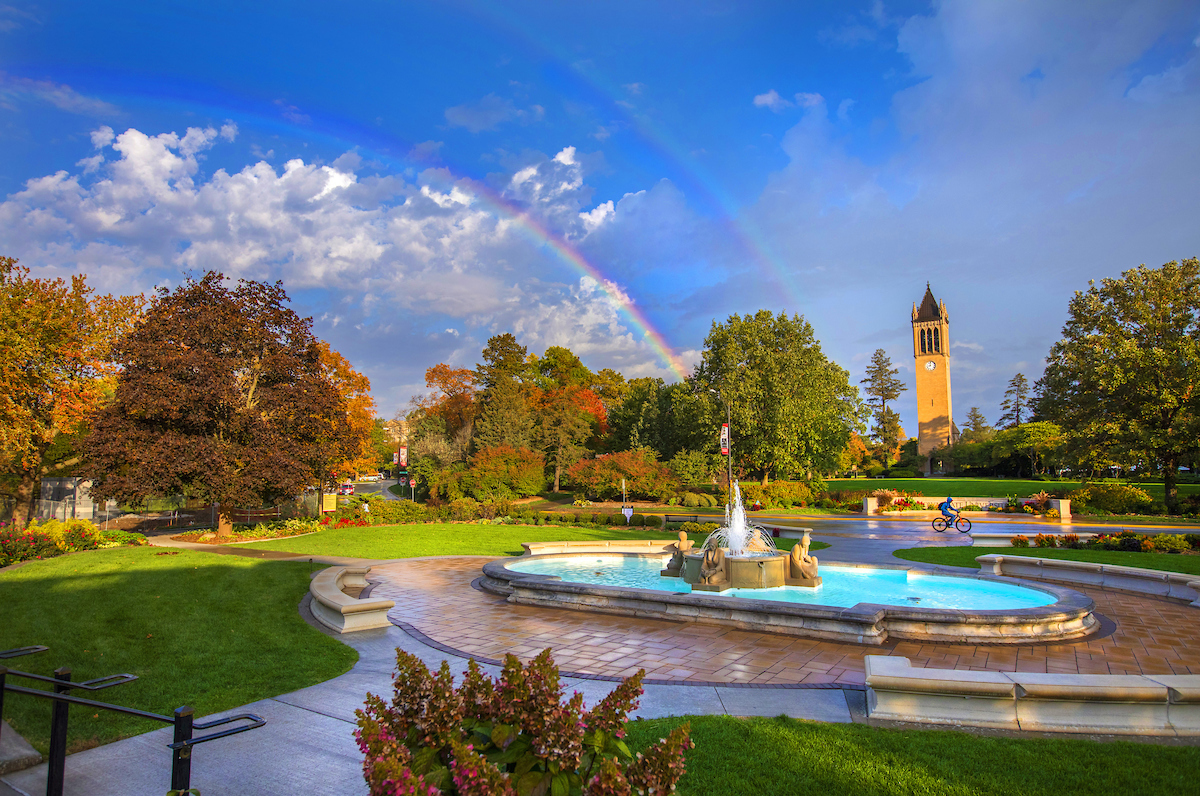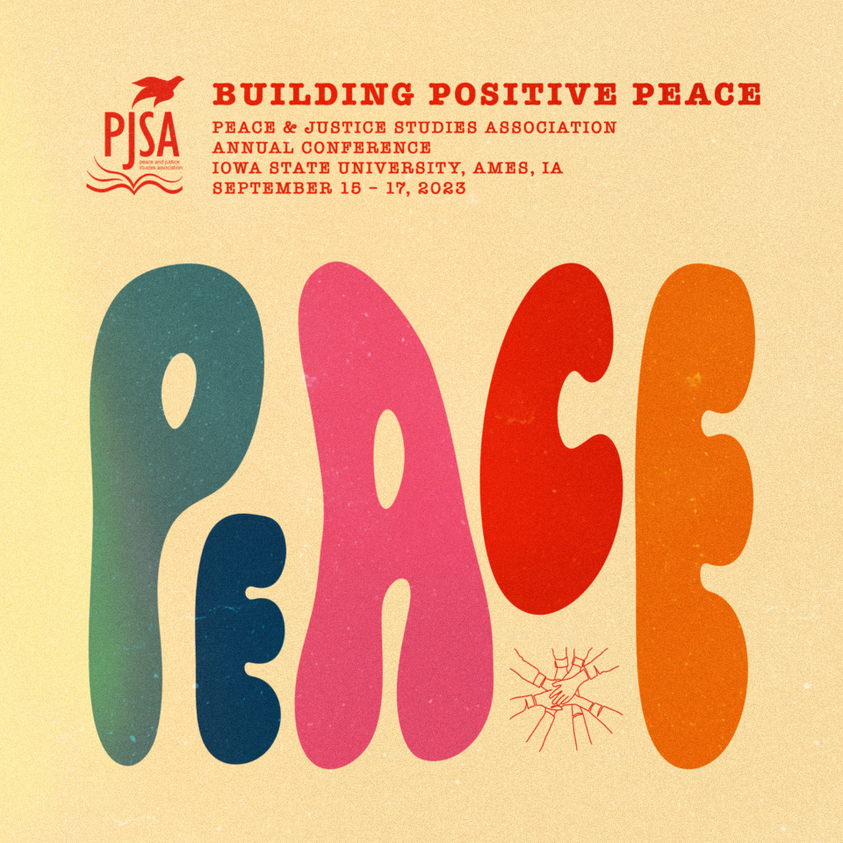
A double rainbow appears over a tranquil Central Campus the early morning of October 20, 2021. Larger image. Photo by Christopher Gannon/Iowa State University.
AMES, IA – When we think about people who have cultivated a more peaceful world, where do our minds wander? Do we see a montage of people linking arms during the Selma-to-Montgomery March or Indian peace activist Mahatma Gandhi? Is it a clip of world leaders shaking hands before a high-stakes negotiation?
Or maybe it hits closer to home, in our own communities, the places where we work, worship or connect with others.
"Building Positive Peace," a collection of essays from a dozen Iowa State University faculty, underscores how all of us can play a role. The authors demonstrate this by drawing from their own disciplines – agriculture, architecture, business, education, engineering, history, music, nutrition and food systems and philosophy.
"Peace is really about relationships. It's a dynamic process, not a fixed state. One of our goals with this book is to spark conversations and offer a reframing of what we do and how we do it," says Christina Campbell, the Sandra S. and Roy W. Uelner Professor and an associate professor of food science and human nutrition.
Campbell co-edited the book with Simon Cordery, professor and chair of the history department. In their introduction, they emphasize the need to engage people from a diverse array of disciplines, not just those traditionally associated with peace studies, such as theology, international affairs and philosophy. Cordery adds that the authors often use the term "positive peace" to distinguish it from other forms and go beyond conflict resolution.
"Peace has long been framed as the absence of war, but it's just a starting point," says Cordery. "How do we build a society that allows people to thrive?"
From his perspective as a historian, Cordery says one way to get there is to acknowledge that human history is frequently presented as a series of turning points based on wars and other conflicts.
"As a consequence, historians often ignore what people do on an everyday basis and the actual ways humanity has survived, because we have, despite our proclivity towards conflict. We could have wiped ourselves out several times throughout the millennia, but we're still here."
Cordery offers an alternative approach in his essay. He points to Freemasons, friendly societies and other voluntary organizations as examples of historical research centered on positive peace, rather than conflict.
In another essay, Campbell and her co-authors, graduate student Gretchen Feldpausch and clinical professor Erin Bergquist, explore the multifaceted benefits of home and community gardening.
"Classical approaches to peace study may look at how hunger contributes to conflict or how conflict contributes to hunger," says Campbell. "How can we come at it from a different angle and create the infrastructure so that people have access to healthy, culturally appropriate food in the first place?"
Other essays explore how:
- The arts provide multiple paths to peace (Jonathan Sturm, professor of music, emeritus.)
- A peace spheres/framework fosters individual fulfillment and peace (E.J. Bahng, associate professor of education.)
- Drinking water security to bring peace to vulnerable populations (Rameshwar S. Kanwar, Charles F. Curtiss Distinguished Professor of agricultural and biosystems engineering.)
- A new framework can boost food supply chain sustainability (Kurt A. Rosentrater, professor of agricultural and biosystems engineering.)
- Ecotourism can contribute to peace and intergroup cooperation (Jose Antonio Rosa, professor of marketing, emeritus; Nichole Hugo and David J. Boggs, faculty at Eastern Illinois University.)
- Supply chain management can positively influence the production and distribution of goods and services (Frank Montabon, Dean's Professor of Supply Chain Management.)
- Homes can be re-imagined to be more sustainable and transcend the current climate crisis (Andrea Wheeler, associate professor of architecture.)
- Transparency in policy making and engaging the public builds trust and moves a community toward sustainable, positive peace (Kenneth "Mark" Bryden, professor of mechanical engineering.)
Roy Tamashiro, peace activist and professor emeritus from Webster University, also contributed an essay on envisioning a world conducive to human flourishing.
Building momentum

Design students at ISU created the poster for the Peace and Justice Studies Association's 2023 conference. Larger image. Courtesy of Christina Campbell/Iowa State University.
Campbell and Cordery say the book builds on conversations that started several years ago. In 2019, Campbell launched a Sustainable Peace Faculty Learning Community, which was funded by the ISU Center for Excellence in the Arts and Humanities. Researchers from different pockets of campus gathered bi-weekly to discuss definitions of peace and share how it related to their own disciplines. This evolved into ten of the faculty co-leading an honors seminar, now three years running.
This fall, the cohort will host the Peace and Justice Studies Association's annual conference at Iowa State from Sept. 15-17. They expect 400-500 attendees, including staff and faculty, students and professionals from across North America. Registration will be free for ISU students.
The conference schedule will be updated this summer on the Peace and Justice Studies Association's website.
Cordery and Campbell say they hope the conference will spark a wider conversation on ISU's campus about "what we do and how we do it."






